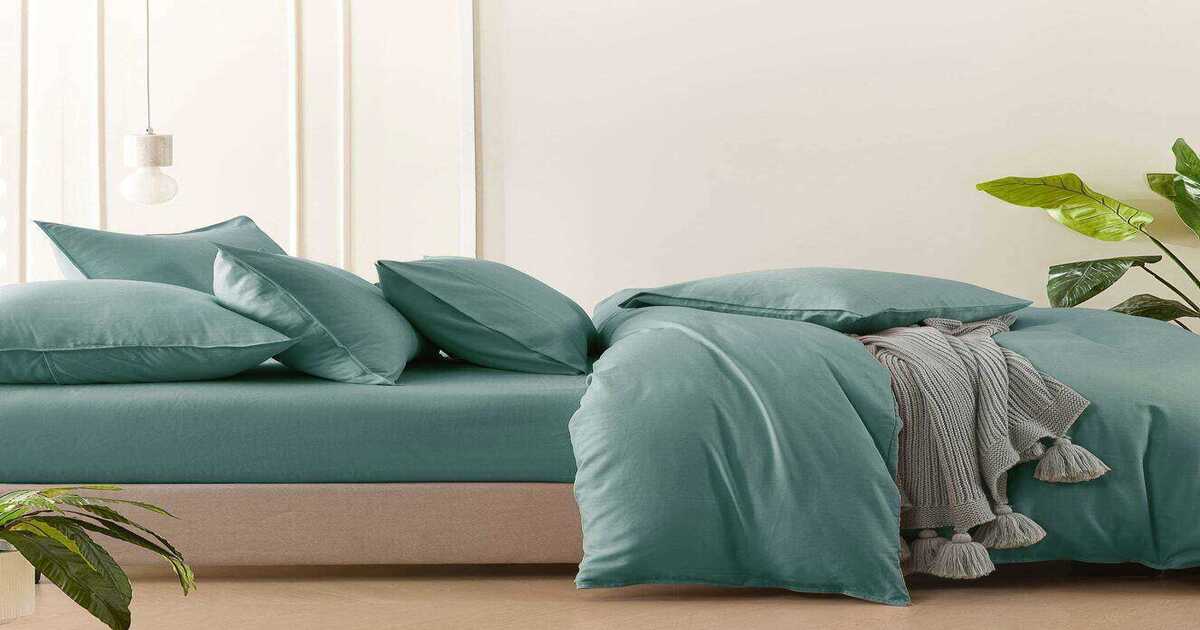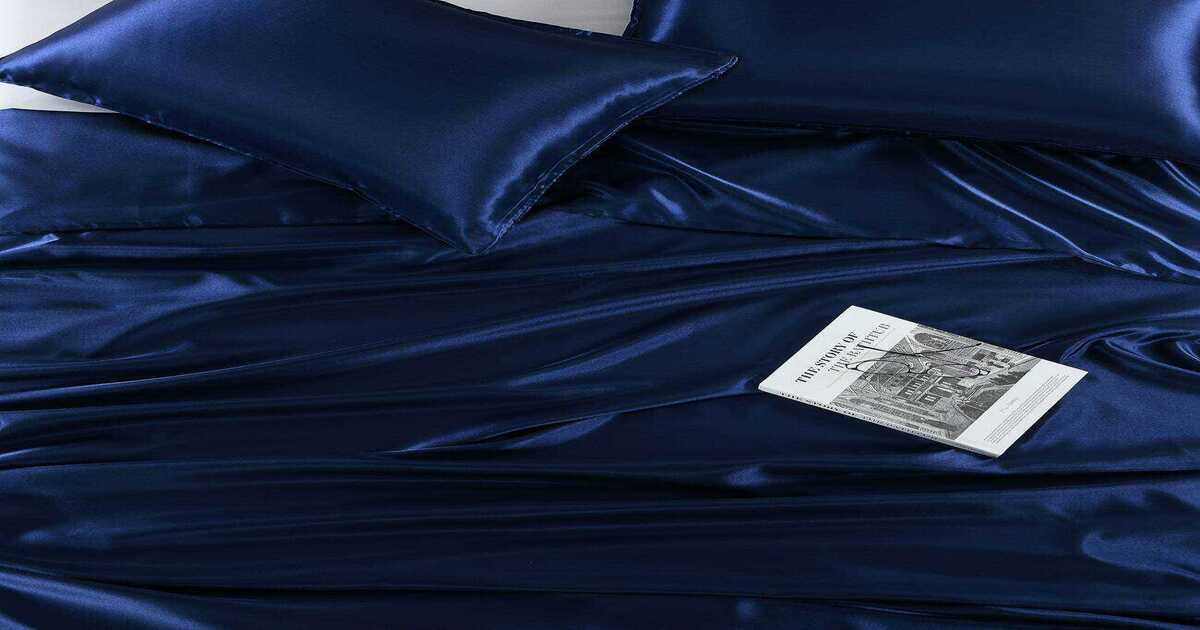What Is the Best Material for Bed Sheets?
Author: Manchester Collection Date Posted:22 May 2024
.jpg)
Are you on a mission to find the perfect bed sheets? Then, it all starts with the material. You should understand what the best material for bed sheets is for your needs and preferences. We stress looking for an individual solution, as the answer is not the same for everybody. you might be looking for cool or warm bed sheets, sheets that are durable and easy to care for, or maybe even bed sheets for people with sensitive skin.
That is why we wrote this guide - we will discuss the properties, similarities, and differences of different materials in order to, hopefully, help you make an informed decision on what sheets you would like to get. In the end, we will also help you learn where you can get the sheets you want. So let’s jump right in and talk about the 7 best materials for bed sheets.
-
Cotton
Cotton is more than likely the most common fabric used for bedding, and many consider it to be the best material for bed sheets. One of the reasons cotton is so popular is its practicality - it is very durable and easy to maintain. More than that, cotton is generally soft, breathable, and has good moisture-wicking properties.
That being said, if you are thinking of getting cotton sheets, it’s important to know that there are different types of cotton fabric, all of which have unique properties. You will likely be able to choose between regular cotton, pima, supima, and Egyptian cotton. Regular cotton is made from short-staple cotton fibres, where each individual fibre is typically between 6mm and 24mm in length.
The other types are made from long-staple fibre, longer than 24mm, and the individual fibres are also thicker than short-staple fibres. The result is that cotton sheets made from long-staple fibre are softer, more breathable, and more durable. Out of the three, Egyptian cotton is typically of the highest quality.
-
Linen
Linen is another very common material for bed sheets. It is a natural material made from the flax plant and shares many of the qualities of cotton; namely, being durable, breathable, and having excellent moisture-wicking properties. If you were to compare linen vs. cotton sheets, many people prefer linen for summer as it doesn’t stick to the body and dries even faster than cotton.
That being said, linen sheets tend to be less soft and have a coarser texture than cotton, particularly when they are new. However, linen sheets become softer with washing, so this is only a short-term downside. Another potential downside of linen is that it wrinkles easily, so you would need to iron your sheets if you prefer a smooth look.
-
Silk
Silk is much rarer and tends to be more expensive, but many people still consider it the best material for bed sheets. It is a natural material that is made from the cocoons of silkworms, with mulberry silk being the most famous subtype. It is made from the cocoons of silkworms that feed exclusively on mulberry tree leaves
Silk bedsheets do have some negative aspects - as we mentioned, they are typically pricier than other materials, they tend to be less durable, and they require specific care, such as washing on cold cycles and air drying. Even with those downsides, silk sheets are highly sought after. Silk sheets are hypoallergenic, good for people who have sensitive skin, and excellent at preventing hair breakage and tangles.
On top of that, silk sheets are highly breathable, have good moisture-wicking properties, and are naturally insulating, making silk good all-season bedding. But more than anything else, people prefer silk bed sheets because of the unique sensation - they are exceedingly soft and provide an incomparably luxurious feel against the skin.
-
Satin
Satin is not a raw material by itself but a weaving technique, and satin bed sheets can be created from long-staple fibres of different materials, like silk, cotton, polyester, or a combination of each. That being said, all satin bed sheets share certain characteristics, regardless of the base material that is used - they are shiny and lustrous on one side while being duller on the other and generally have a silky feel to them.
In fact, people often confuse satin for silk sheets due to their similar appearance and feel. Typically, satin is more durable than silk but also needs special care during washing and drying and is less breathable than silk. However, as the properties of individual satin sheets also depend on the composition of materials that are used to create them, the characteristics can vary.
-
Bamboo

Bamboo bed sheets have gained in popularity in recent years, in large part because bamboo is one of the most sustainable materials, making bamboo bed sheets an eco-friendly choice. But, are bamboo sheets any good? Absolutely; bamboo bed sheets are soft, durable, good at wicking away moisture, and provide excellent breathability.
Due to these characteristics, bamboo is one of the best materials for bed sheets if you like to sleep cool, which also makes them one of the best sheets for summer. On top of that, bamboo sheets are naturally hypoallergenic, antibacterial, and antimicrobial. However, bamboo sheets do not have natural insulating properties, so they are typically not the best choice for winter.
-
Flannel
Now that we are on the topic of warm sheets for winter, we must talk about flannel sheets. Like satin, flannel is not a type of raw material but a processing technique; in short, flannel is created by brushing a fabric so it becomes thicker and softer. Typically, flannel sheets are made from cotton, but they can also be made from wool or synthetic materials.
The main characteristic of flannel sheets, regardless of the material they are made from, is that they are soft, warm, and heavy. As a result of the brushing, one or both sides of flannel sheets will have a fuzzy finish that many people like. However, flannel bed sheets are not very breathable or moisture-wicking, so while they are a good choice for winter, they should not be your first choice for hot weather.
-
Microfiber
Finally, the last material for bed sheets that we will discuss is microfiber. Microfiber is a synthetic material made from extremely thin fibres of polyester or a blend of polyester and nylon. Microfiber bed sheets are typically not as soft as cotton or as luxurious as silk or as breathable as bamboo, or as warm as flannel.
So why would microfiber be considered one of the best materials for bed sheets? Because of it’s practicality. Microfiber bed sheets are wrinkle-resistant, easy to care for, and typically less expensive than bed sheets made from other materials, making them a good choice for a busy household. Thus, if ease-of-use is your most important criterion, you could consider microfiber sheets.
Thread, Momme Count and GSM
When you are choosing bed sheets, the material they are made of should not be the only thing you consider. So, at the end, we should also quickly explain what thread count, momme count, and gram per square meter are and how they affect the characteristics of bed sheets.
Thread count refers to the number of vertical and horizontal threads that are woven into a square centimetre of fabric - the higher the thread count, the denser the fabric. Thread count is used for most fabrics besides silk and flannel. For silk, a momme count is used. Momme is the unit of measurement for the weight of silk of a specific dimension, namely, one momme is 4,340 grams per square meter.
As density affects weight, the momme count can also be considered a measure of the density of the weave of silk. Just like with thread count, a higher momme count indicates a denser silk weave. For flannel, grams per square meter is used to measure the weight and, indirectly, the density of the fabric. In practical terms, all three measurements can be used to determine the same thing: the density of the fabric.
That leads us to the question, is a higher or lower thread count, momme count, or GSM better? In truth, neither. In general, bed sheets with a higher count tend to be warmer, more durable, and softer. However, they also tend to be less breathable and heavier, so you should consider your preferences when deciding on the thread count, momme count, or GSM.
Where Can You Find High-Quality Bed Sheets Made from the Best Materials?

We hope this article has helped you choose what the best material for bed sheets is for you. If it has and you know what you would like to get, you can find what you need at Manchester Collection. Our collection of bed sheets includes everything you could want, from 100% Egyptian cotton sheets to satin sheets to bamboo sheets and everything in between.
Simply place your order online, choose your preferred payment method (including buy-now-pay-later), and we will deliver the package right to your address. You can also find a store near you and feel the material in person before you make a purchase. And if you have questions or need assistance, feel free to contact us, we will gladly help you out in any way we can.
